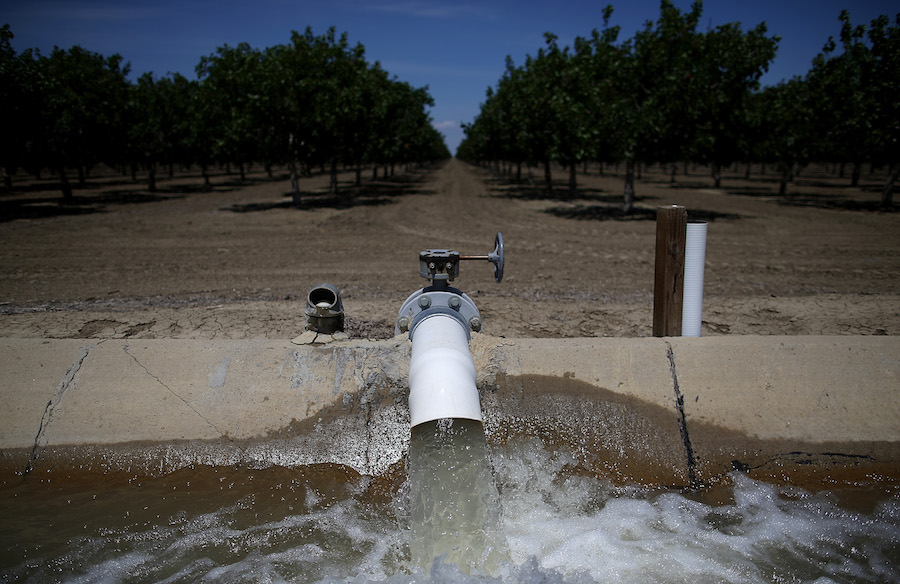A new report is highlighting the gaps in California’s water infrastructure — and how much money the state will need to fix it.
The report, published by the state’s Water Resources Control Board, found that 620 public water systems and 80,000 domestic wells are at risk of failing to provide affordable and uncontaminated water, a problem that California will need $4.7 billion of extra funding to solve. The report includes the first-ever analysis of the state’s domestic wells — a common water source for rural communities. Threats to these systems are often poorly understood due to lack of good data.
California is not alone in its water woes. America’s water systems, on the whole, are aging and underinvested in — the American Society of Civil Engineers’ 2021 report card gave American water infrastructure a C grade. That report card highlighted that federal investment in water infrastructure projects has declined from 63 percent of all capital spending in the water sector in 1977 to just 9 percent in 2017. Meanwhile, maintenance costs reached an all-time high in 2017, in part due to the fact that nearly half of maintenance is done reactively, after systems have failed because of deferred maintenance or investment.
With all that disinvestment, it’s no surprise that American water systems have contamination problems: A 2018 study analyzing data over a 34-year period showed that between 3 to 10 percent of community water systems in the U.S have health-based violations in any given year, affecting between 9 and 45 million people. “The communities that were really struggling tended to be rural, low-income communities,” said Maura Allaire, professor of urban planning at University of California, Irvine, and lead author on the 2018 study.
California was one of the first states to recognize access to healthy and affordable drinking water as a human right, and every year, the State Water Resources Control Board documents water systems that fail to meet this criteria. The board’s new report moves beyond that assessment to look for systems that are at risk — a kind of early monitoring to identify systems in need before they fail, according to Gregory Pierce, principal investigator on the report and associate director of the Luskin Center for Innovation at the University of California, Los Angeles. The report was “the most comprehensive assessment that’s been done on the state level anywhere in the U.S., ” said Pierce.
The report assessed metrics of water quality, accessibility, and affordability across 2,779 community water systems that serve less than 10,000 individuals. Among these, nearly 12 percent already failed to meet the state’s criteria for healthy drinking water, and an additional 48 percent were either at risk or potentially at risk. One-third of the state’s domestic wells (which serve fewer than three households), and nearly half of the state’s small systems (which serve between three and fifteen households) — neither of which are regulated by the state — were deemed at high risk of failing.
“Previously, there was very limited statewide information on water quality at private wells or water systems that are so small that they serve under 25 people,” said Allaire. “This is the first step out of many to try to shed light on these issues that have been undocumented by quite some time.”
These water troubles will only increase as climate change accelerates. According to some researchers, California is in the middle of a decades-long megadrought fueled by global warming, which will impact water access and affordability — two metrics taken into consideration when evaluating water systems risk. “Drought and access and water quality are all related,” said Pierce.
Fixing California’s water infrastructure is no easy task. Pierce said that one key finding from the report is that temporary solutions, like providing bottled water to people whose water systems fail, are more expensive in the long run than fixing systems before they fail. “If we can take a long-term perspective and make investments now, it’s actually going to save us — the state, society — more to do that than just trying to plug the gaps,” said Pierce. The report found that fixing failing and at-risk wells in California will cost up to $10.25 billion. The state has some money set aside through the Safe and Affordable Drinking Water Fund, which was established by the state of California in 2019 and provides $130 million annually for drinking water solutions, but it will still need an additional $4.7 billion to foot the costs.
President Joe Biden’s new infrastructure proposal might help fill some of that gap. The American Jobs Plan sets aside $111 billion to fix the nation’s water infrastructure, $56 billion of which will come in the form of grants and low-cost loans to states and tribes. But that might still not be enough to make up for years of disinvestment and aging systems: The annual investment gap for drinking and wastewater nationwide will grow to $434 billion by 2029, according to American Society of Civil Engineers’ report card.
When it comes to California, Pierce says the federal money will help if Congress approves it, but California will still need to find a way to make up the difference. To Pierce, it’s a no-brainer to fill the funding gap to get California’s water in compliance with the state’s legislation establishing safe drinking water as a human right. “We have a law passed, but we haven’t fully funded the effort,” he said. “It’s essential for health and human dignity.”




